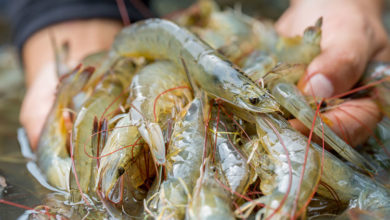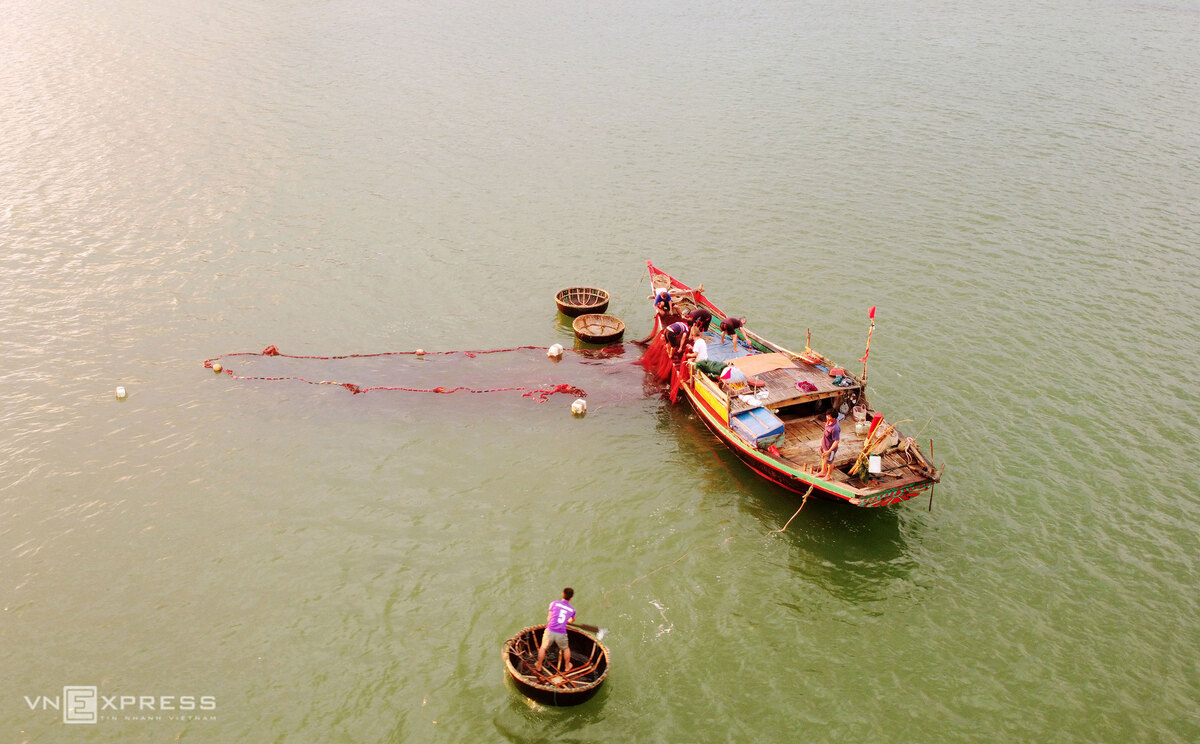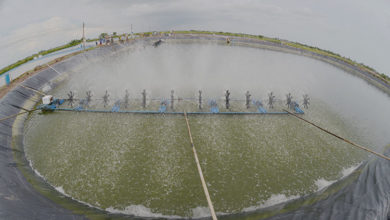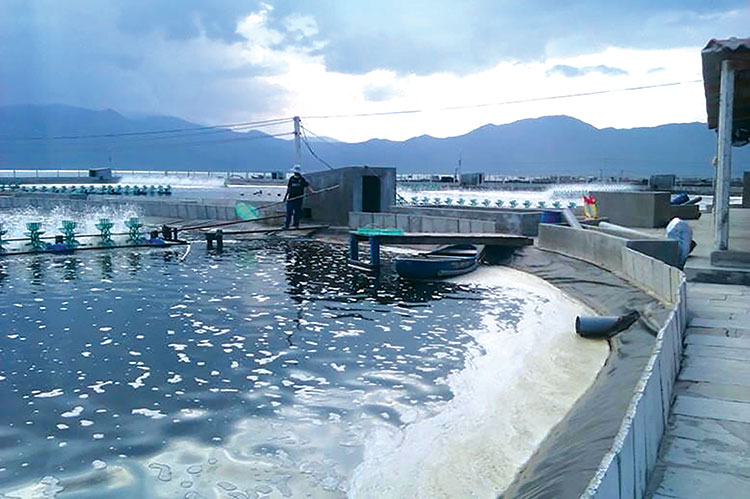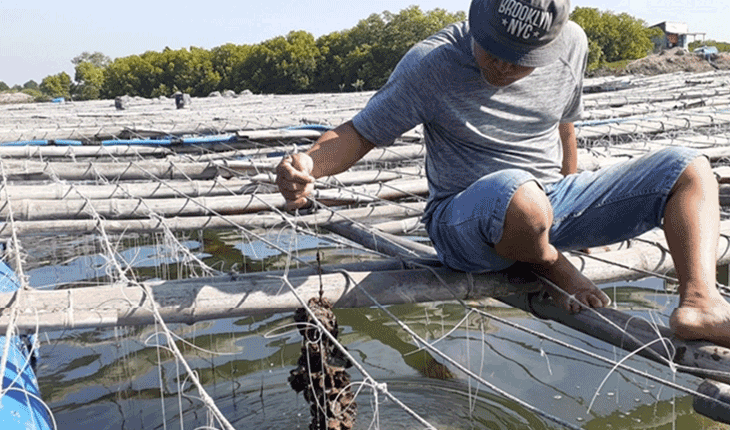The super-intensive, rotated and zero greenhouse gas emission shrimp farming model can afford as much as 300-500 shrimp/m2. This model has just been studied and applied in Trà Vinh.
Brackish shrimp farmers in the Mekong Delta are shifting to the intensive model, quickly from black tiger shrimp extensive earthen ponds to white leg shrimp HDPE pond liners.
However, since early 2022, more than 70% of the intensive white leg shrimp farms have reduced output or been halted due to the pandemic. Besides, so as to produce one ton of commercial white leg shrimp, it takes farmers a large amount of natural resources, including 0.45ha of arable land, 45,500 m3 of water, 0.612 tons of low value fish, and 24,859 kwh of energy, emitting more than 13 tons of CO2.
For sustainable development of the brackish water shrimp sector, a new intensive white leg shrimp model is needed so as to help farmers use natural resources, prevent disease outbreaks, cut down production costs without emitting CO2.
To deal with the matter, businesses in Trà Vinh province has been studying, developing, and applying the super-intensive white leg shrimp model, basing on four criteria: conserve mangrove forests, effectively use soil, water, and energy resources; rotating crops in combination with farming algae, shrimp, and fish so as to reduce production costs and environmental pollution, and use renewable energy to replace fossil fuel to prevent emission.
The new super-intensive white leg shrimp model is built on the six-hectare land of the province, including 1ha of water treatment facility, 0.2ha of algae farming facilities, 1ha of commercial shrimp farm, 2ha of mangrove conservation area, and 1.8ha of preliminary modified atmosphere packaging area.
The water treatment facility consists of 10.000m3 water treatment ponds equipped with a blue green algae killing system without using chemicals. The commercial shrimp farm consists of five 1,000m2 round ponds, half of which lie beneath the soil and 10 floating round ponds, 500m2 each.
The bottom of these shrimp ponds are inverted cone shaped, lined with HDPE and installed with a siphon in the middle which helps gather organic waste undissolved in water. Shrimps can be reared at the density of 300-500 pcs/m2 at each stage. Shrimp ponds provided with oxygen have a purity of more than 90% thanks to the oxygen separation from the air with a capacity of 1,000kg/day.
Each shrimp pond is equipped with an oxygen dissolving system and an automatic feeder. Farmers can monitor the pH online, salinity, and degree by sensor.
Besides, the mangrove forest conservation area has 20,000 mangroves and fish farmed here can help resolve organic waste discharged from wastewater of shrimp ponds. Water from mangrove forest is pumped into the input water resource, treated, and reused for shrimp farming.
VFM


